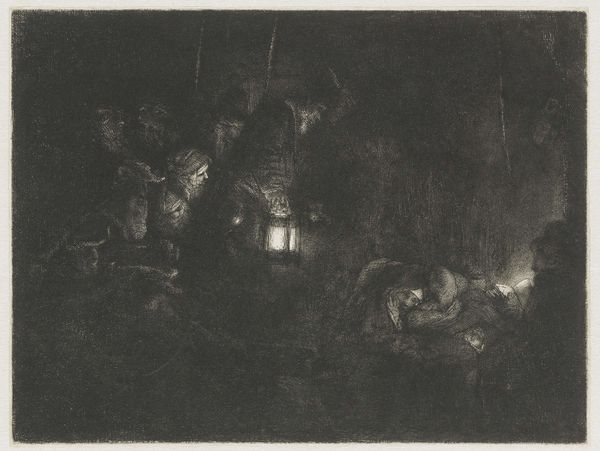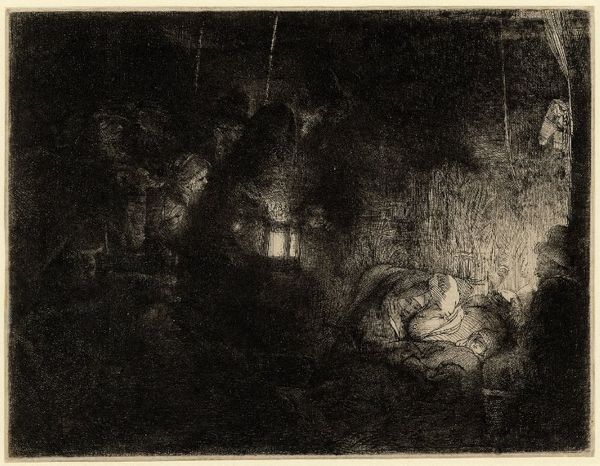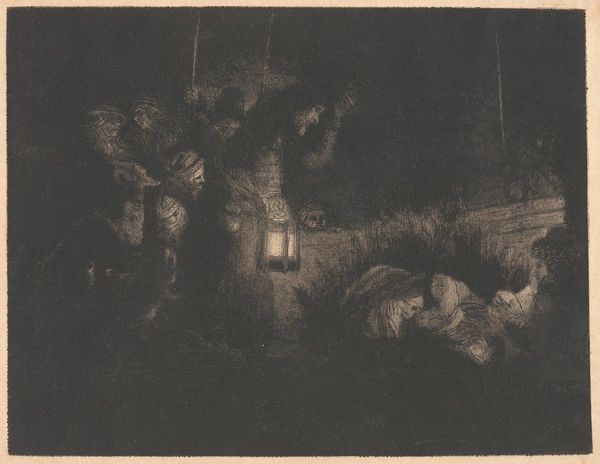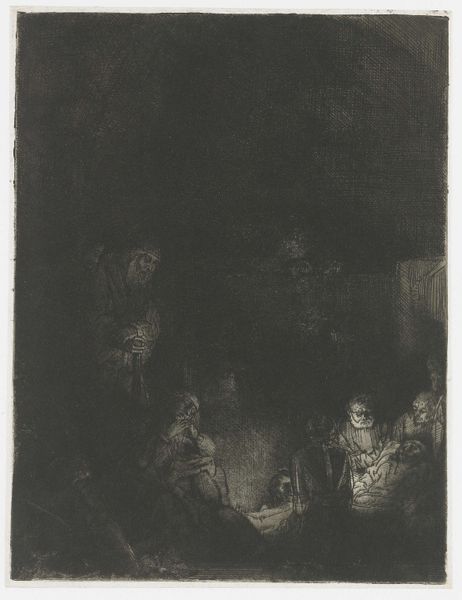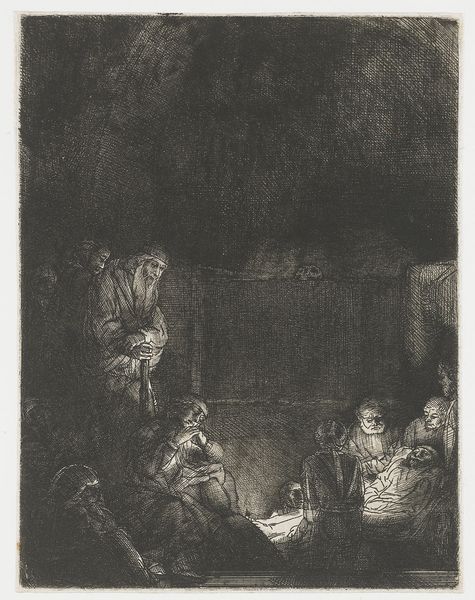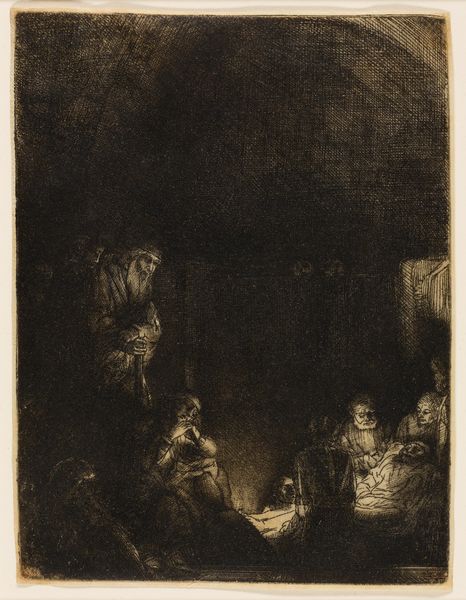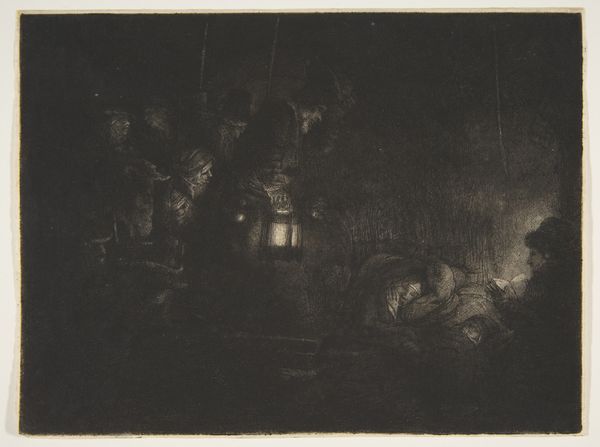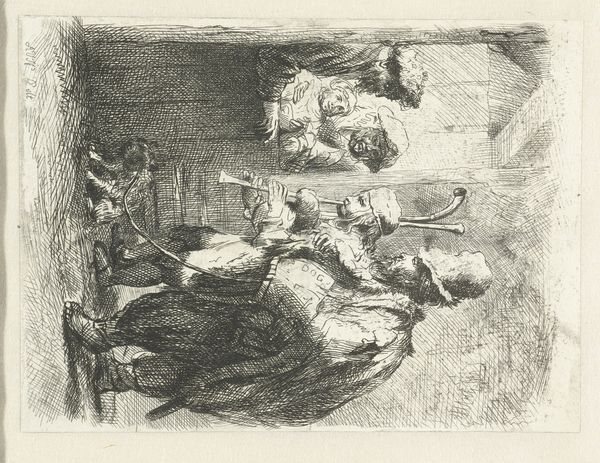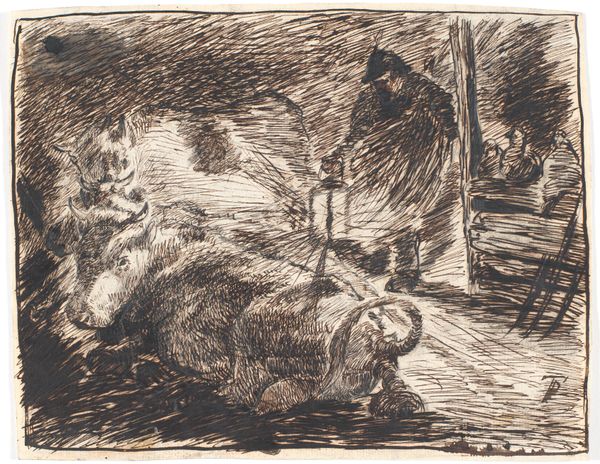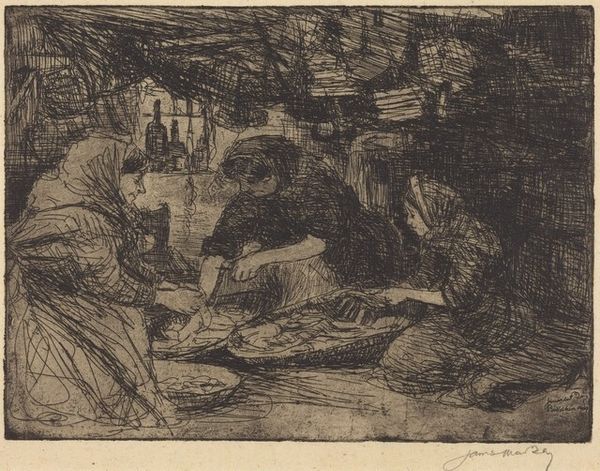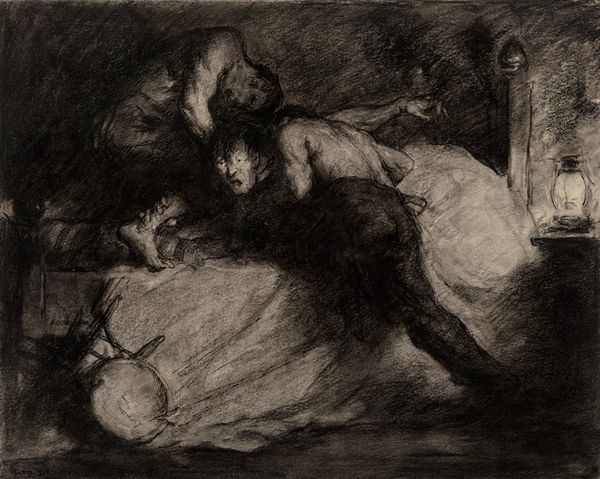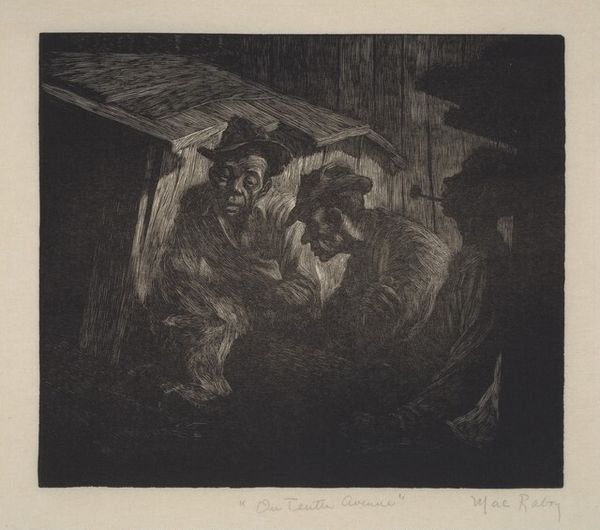
The Adoration of the Shepherds: A Night Piece c. 1657
0:00
0:00
drawing, print, etching, paper, ink
#
drawing
#
narrative-art
#
baroque
#
dutch-golden-age
# print
#
etching
#
landscape
#
figuration
#
paper
#
ink
#
chiaroscuro
#
history-painting
Dimensions: 148 × 195 mm (image); 152 × 198 mm (sheet)
Copyright: Public Domain
Curator: As we gaze upon "The Adoration of the Shepherds: A Night Piece" from around 1657, etched by Rembrandt van Rijn, one is immediately struck by its captivating chiaroscuro. What impressions does this piece conjure for you? Editor: Well, instantly, it’s the stark contrast of light and shadow that commands attention. It’s moody, theatrical, almost claustrophobic—that tight circle of light emphasizes the material reality of the scene. I’m curious about the ink and paper used to create these effects. Curator: Rembrandt masterfully employs the etching technique to amplify the drama of this biblical scene. We can see here his keen understanding of stagecraft, directing the viewer's gaze toward the radiating light which illuminates the Holy Family surrounded by humble shepherds. The choice of representing the scene at night enhances its mystical atmosphere, fitting within the Baroque sensibilities of the time. Editor: Absolutely. The tangible darkness makes the light more potent, more… consumable. Rembrandt's handling of the materials brings out not just the holy scene but the very labor and skill needed to create the etching—we must consider his workshop practices, too. What inks, what paper afforded this tonal range and level of detail? It surely speaks volumes of their worth and availability then. Curator: Indeed, access to materials significantly dictated artistic possibilities. But it is also worthwhile noting the historical context. Rembrandt produced this during a turbulent period in the Dutch Golden Age when artistic patronage shifted amid political and religious tensions, and so the choice of this theme for wider consumption speaks of an intention to consolidate society's beliefs and values around important religious matters. Editor: Fascinating! It speaks of how the art making relates not just to individual skills, but is heavily embedded in cultural and economic forces. One sees it’s more than mere reproduction; this painstaking labor elevates, almost transforms, base materials into cultural artifacts of enormous power and value. Curator: Agreed, and it encourages us to see past a single reading and connect it to its position and reception throughout art history. Thanks for bringing in that new perspective to this study! Editor: Thank you. Recognizing the work's material existence reminds us that art-making is labor, a product of very real conditions.
Comments
No comments
Be the first to comment and join the conversation on the ultimate creative platform.
